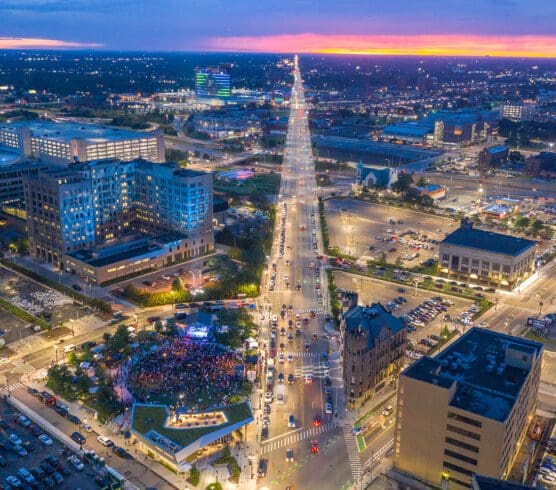By Joshua Long, Data Program Director
In the last BIZ Insider, we looked at the Downtown population on a large scale and in today’s issue, we take a deeper analysis on how we comb the data to arrive at our conclusions.
There are a variety of data sources and ways to qualify the number of residents Downtown. While the census determined the number of residents at a location based on where they live on a specific date (April 1st of 2020), the data from smart phones can count the number of people at their residence on any given day. This gives us the ability to do some basic descriptive statistics to enrich our understanding of the population throughout the day, work week or season.
From 2019-2021 there were around 4,000 individuals occupying Downtown residences on any given day — that number was 175 less (on average) in 2021 compared to 2019. If we look at this difference only, the two population numbers look pretty similar. However, there is more to the story.
The graph above shows both annual average daily residents and annual maximum daily residents Downtown using smart phone-derived estimates. In 2019, at its maximum, there were 6,211 people staying at their Downtown residence. But in 2020, that number did not go above 5,608. It was even lower in 2021 – 4,787, which is 23 percent fewer people than the maximum in 2019. Typical population counts (census) measure the number of people who claim they reside in a place. Since you need to stay Downtown consistently to get counted in a day (which likely means you rent or own your residence), the maximum count is closer to what is typically counted as a place’s population.
Looking at the variance differentiates the population over the years even more. While the median day for all three years is similar, the standard deviation (and variance) from the median is much higher in 2020. Anecdotally, this makes sense as people were still reacting to news about the pandemic and then adjusting their behavior throughout the year.
Looking at the graph of daily averages per month, from March of 2020, when the pandemic began in the United States, behavior shifted and people (non-essential workers) stayed in their residences more often and started working from home. The daily average population (counting from people’s devices who stay downtown overnight) was higher in March 2020 than in 2019 and continues to grow through June of 2020. Then in July of that year, the daily average starts to decrease, and it falls below 2019 levels. This may have been caused by people who were able to take advantage of remote work and move to long-term temporary remote locations outside their normal residence. The daily average population doesn’t reach 2019 levels again until February of 2021.
We will continue to follow the latest Downtown Detroit Datascape trends and projections. If there is a certain topic or area that interests you, please reach out to Josh.



